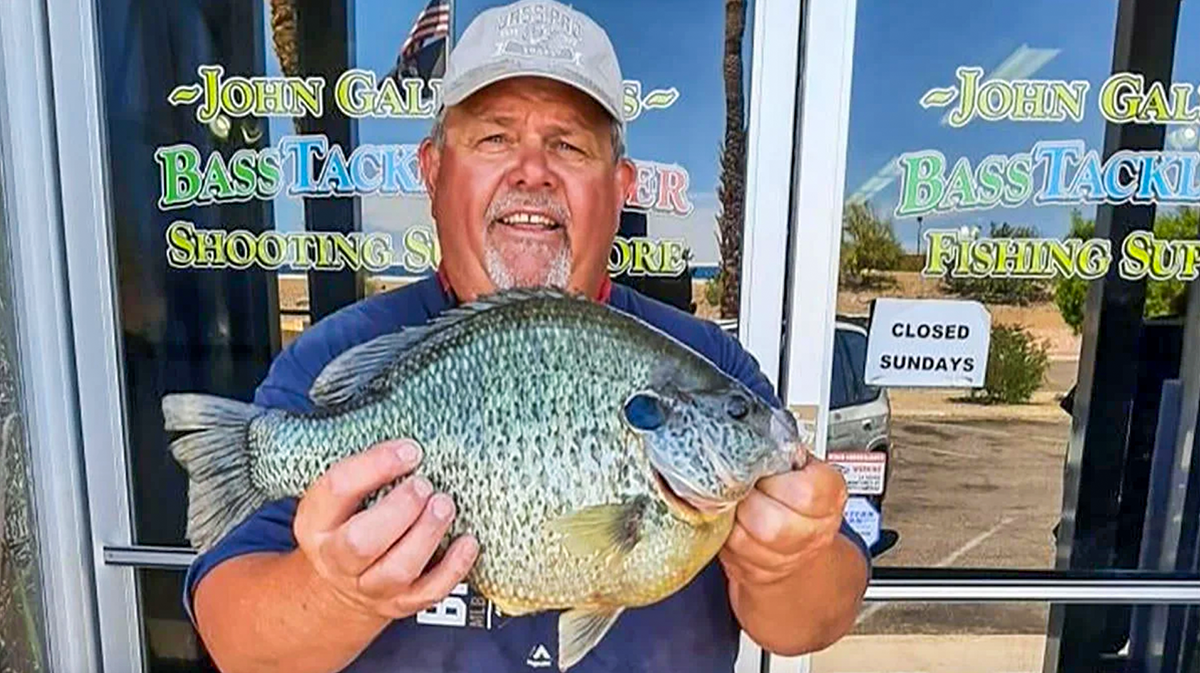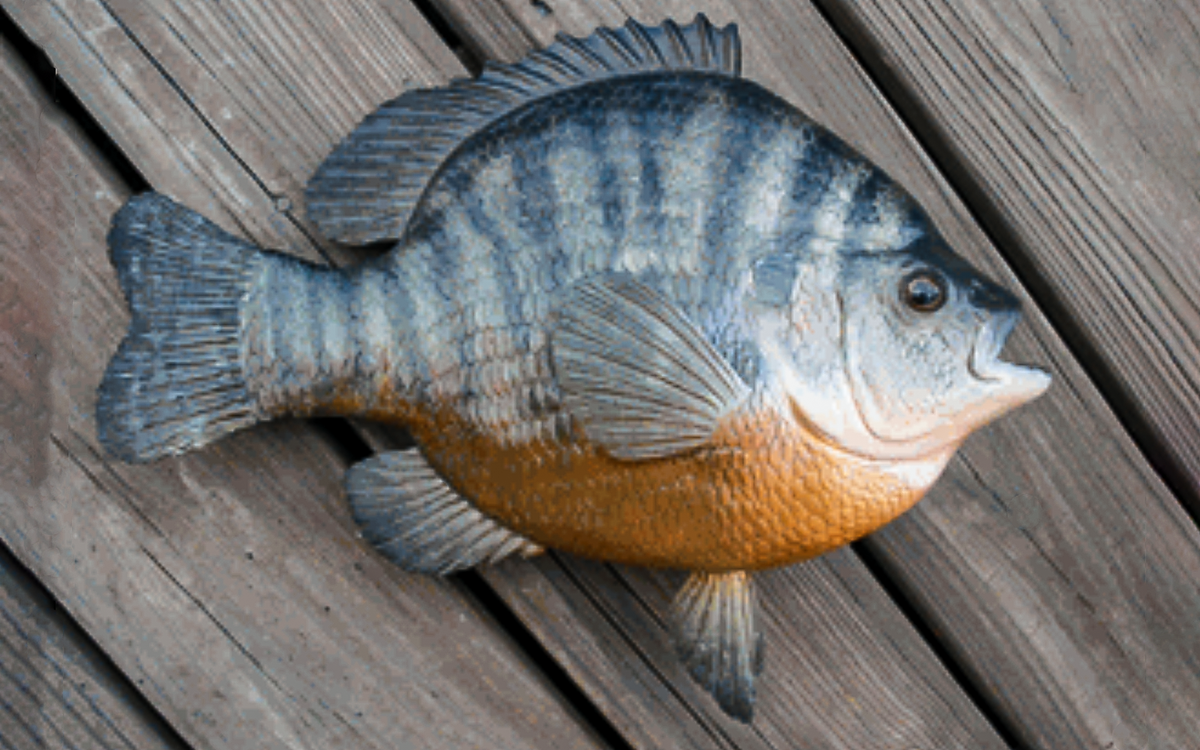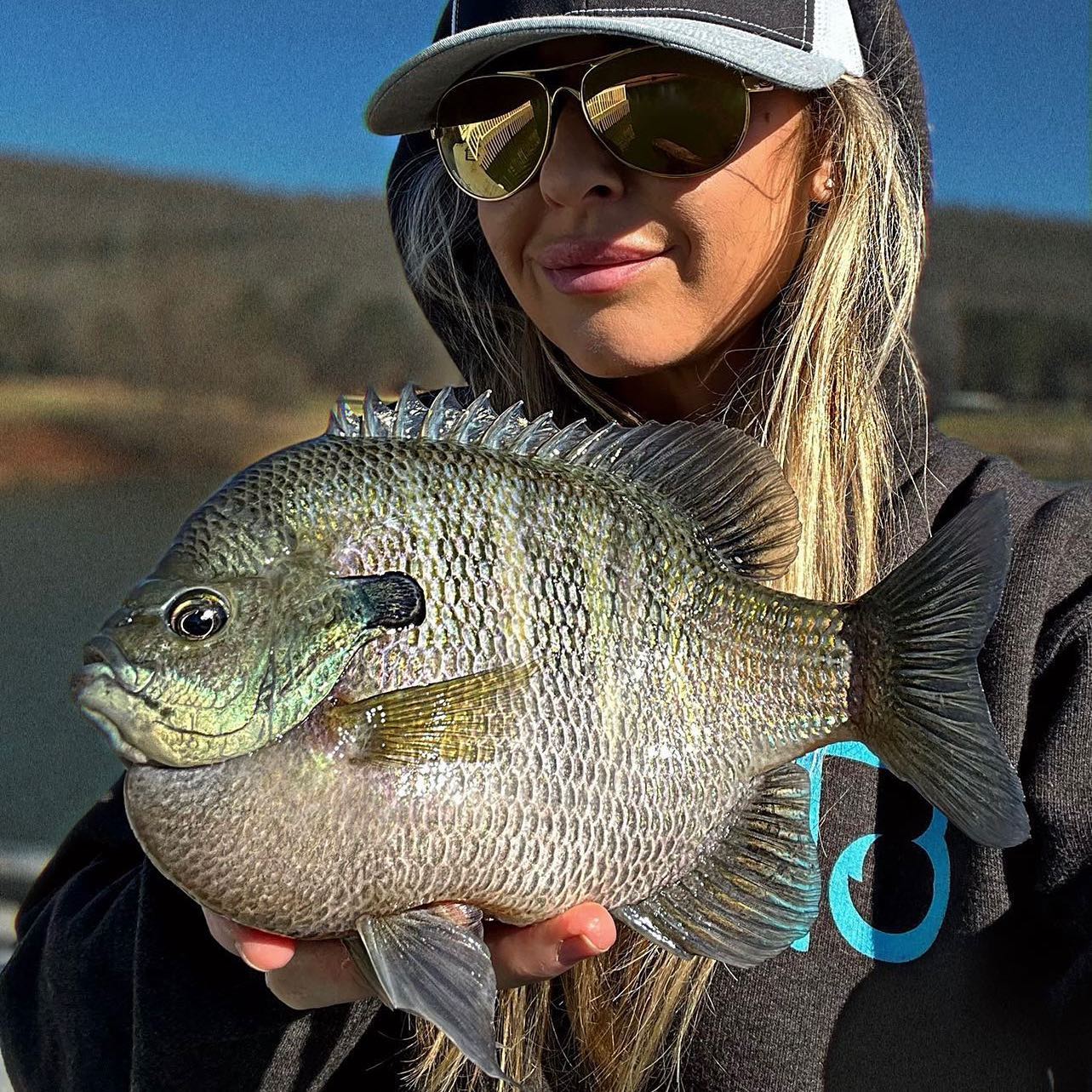The largest bluegill ever caught weighed 4 pounds, 12 ounces. It was caught by T.S.
Hudson in Ketona Lake, Alabama in 1950. Bluegill, a popular freshwater fish, is sought after by anglers for its size and fight. The record bluegill catch of 4 pounds, 12 ounces stands as a testament to the potential size of these fish.
Anglers often target bluegill in lakes, ponds, and slow-moving streams. Bluegill are known for their distinctive coloring and panfish status. Catching a large bluegill requires patience, skill, and the right bait. This impressive record continues to inspire fishing enthusiasts worldwide. Understanding bluegill habits and habitats can significantly increase an angler’s chances of landing a trophy-sized fish.

Credit: www.wired2fish.com
Introduction To Bluegill
The bluegill is a fascinating freshwater fish. It is popular among anglers for its unique features and behavior. This section will provide an in-depth look into the bluegill, exploring its popularity, habitat, and behavior.
Popular Freshwater Fish
Bluegill is one of the most popular freshwater fish in North America. It is known for its vibrant colors and distinctive shape. Anglers love catching bluegill for sport and food. It is easy to catch, making it perfect for beginner anglers. Bluegill is also a great fish for children to catch. Its abundance and ease of catching make it a favorite for many fishing enthusiasts.
Habitat And Behavior
Bluegill typically inhabit ponds, lakes, and slow-moving streams. They prefer water with plenty of vegetation. This provides them with food and shelter. Bluegill are often found in shallow waters during the spawning season. They move to deeper waters during hot summer days. These fish are very social and often swim in schools. Bluegill feed on insects, small fish, and plants. They are known for their aggressive feeding behavior.
| Preferred Habitat | Behavior |
|---|---|
| Ponds | Swim in schools |
| Lakes | Aggressive feeders |
| Slow-moving streams | Move to deeper waters in heat |
- Preferred Water: Shallow during spawning, deep in summer
- Diet: Insects, small fish, plants
- Social Behavior: Swims in schools
Historical Bluegill Records
The bluegill is a popular freshwater fish. Anglers love catching them. The species has impressive historical records. Some bluegills have grown to massive sizes. Let’s dive into the history of the largest bluegill catches.
Past Record Holders
Many anglers have caught large bluegills over the years. These past record holders are famous among fishing enthusiasts.
| Year | Angler | Location | Weight (lbs) |
|---|---|---|---|
| 1950 | T. Hudson | Alabama | 4.75 |
| 1998 | J. Smith | Georgia | 4.50 |
| 2004 | S. Johnson | California | 4.30 |
Notable Bluegill Catches
Several bluegill catches stand out. These notable catches are remarkable:
- George Perry – Caught a 4.25 lb bluegill in 1932.
- Mary Brown – Landed a 4.10 lb bluegill in 1975.
- Tim Green – Reeled in a 4.00 lb bluegill in 1980.
These catches are celebrated in the fishing community. They show the potential size of bluegills. Anglers dream of beating these records.
The Record-breaking Bluegill
The largest bluegill ever caught made headlines among fishing enthusiasts. This incredible catch set a new benchmark in the world of fishing. Let’s dive into the details of this record-breaking bluegill.
Catch Details
The bluegill weighed an astonishing 4 pounds, 12 ounces. It measured 15 inches in length. This giant bluegill was caught in Ketona Lake, Alabama. The catch date was August 1950. The bluegill was officially verified by the International Game Fish Association (IGFA).
Angler’s Story
The angler behind this incredible catch was T.S. Hudson. He was an avid fisherman with years of experience. Hudson was fishing with a simple rod and reel. The bait used was a small earthworm. The moment he hooked the bluegill, he knew it was special. Hudson fought the fish for nearly 15 minutes. Finally, he landed the record-breaking bluegill.
Measurement And Verification
When it comes to documenting the largest bluegill ever caught, accurate measurement and verification are critical. This ensures the fish’s size and weight are correctly recorded, making the catch official. Let’s dive into the specifics of measuring and verifying these massive bluegills.
Weight And Size
The weight of the bluegill is its most important measurement. Anglers use certified scales to get an accurate weight. The size is also key, including the length and girth of the fish. Measurements are taken from the tip of the nose to the end of the tail. Girth is measured around the fish’s widest part.
| Measurement | Details |
|---|---|
| Weight | Measured using certified scales |
| Length | From nose to tail |
| Girth | Widest part of the fish |
Official Verification Process
Verification ensures the catch’s authenticity. An official must witness the weight and measurements. The process includes:
- Using certified scales
- Recording the measurements
- Photographic evidence
- Witness signatures
All these steps confirm the catch’s legitimacy and make it an official record. Verification is done by recognized angling organizations. They ensure all rules and guidelines are followed.
Impact On Fishing Community
The largest bluegill ever caught has made waves in the fishing community. This monumental catch has sparked excitement and discussion among anglers. Let’s explore how this event has impacted the fishing world.
Reactions And Celebrations
The fishing community erupted with joy at the news of the record catch. Anglers worldwide celebrated this incredible achievement. Social media platforms buzzed with photos and stories about the catch.
Fishing forums were filled with discussions and congratulations. Some anglers even organized local events to honor the achievement. This catch brought the fishing community closer together. It was a moment of shared pride and excitement.
Influence On Angling Practices
The record-breaking bluegill has changed how anglers fish. Many now use the techniques that caught the giant bluegill. This includes choosing specific bait and fishing at certain times.
Anglers also study the habitat where the bluegill was caught. This has led to new fishing strategies and locations. The catch has inspired anglers to improve their skills and knowledge.
Additionally, there is now more focus on conservation. Anglers want to ensure the survival of bluegill populations. This means practicing catch-and-release and supporting sustainable fishing practices.
| Impact | Details |
|---|---|
| Community Unity | Celebrations, discussions, and shared pride |
| Fishing Techniques | Adoption of new methods and strategies |
| Conservation Efforts | Increased focus on sustainable practices |
The largest bluegill ever caught has had a lasting impact. It has united the fishing community and improved angling practices. This event has inspired anglers to fish better and protect their waters.
Conservation Efforts
The conservation of bluegill populations is critical. It ensures the health of aquatic ecosystems and supports recreational fishing. Conservation efforts include managing populations and promoting sustainable fishing practices. These efforts help maintain the balance and longevity of bluegill species.
Bluegill Population Management
Effective bluegill population management involves monitoring and regulating their numbers. This helps to prevent overpopulation and maintain ecological balance. Authorities often use surveys to track bluegill numbers in various water bodies.
Based on the data, they implement strategies to manage the population. These include introducing predators, regulating fishing seasons, and setting catch limits. By maintaining a balanced bluegill population, ecosystems thrive, and fishing remains enjoyable.
Sustainable Fishing Practices
Promoting sustainable fishing practices is essential for conservation. Anglers should follow guidelines to ensure bluegill populations remain healthy. This includes using proper equipment, practicing catch and release, and adhering to size and bag limits.
Here are some key sustainable fishing practices:
- Use barbless hooks to minimize injury to fish.
- Release smaller fish to allow them to grow and reproduce.
- Follow local fishing regulations and guidelines.
Educating the public about these practices ensures that future generations can enjoy bluegill fishing.
| Practice | Description |
|---|---|
| Barbless Hooks | Minimizes injury to fish during catch and release. |
| Release Small Fish | Allows fish to grow and reproduce. |
| Follow Regulations | Ensures sustainable fishing practices. |
Tips For Catching Large Bluegill
Want to catch the largest bluegill ever? Follow these tips and tricks. Knowing where to fish and what bait to use is key.
Effective Baits And Lures
Using the right bait can make a big difference. Here are some effective options:
- Worms: Nightcrawlers and red worms work best.
- Crickets: Bluegill love crickets. They are easy to find.
- Artificial Lures: Small jigs and spinners attract large bluegill.
Try different baits to see what works best. Keep a variety of options in your tackle box.
Ideal Fishing Locations
Finding the right spot is crucial. Bluegill prefer certain areas:
| Location | Description |
|---|---|
| Shallow Waters | Bluegill often stay near the shore. |
| Weed Beds | Look for areas with plenty of vegetation. |
| Drop-offs | Find spots where the water depth changes quickly. |
Start fishing early in the morning. Bluegill are more active then.

Credit: www.wired2fish.com
Future Of Bluegill Fishing
The future of bluegill fishing looks promising with new records and technology. Anglers are excited about potential new catches. Technological advancements make fishing more efficient and enjoyable.
Potential For New Records
The largest bluegill ever caught weighed 4 pounds, 12 ounces. This record still stands, but anglers hope to break it. Better fishing techniques and tools increase the chances of catching bigger bluegills. New bait and lures attract larger fish. More people are joining the sport, increasing the probability of new records.
Technological Advancements
Modern technology makes bluegill fishing easier and more fun. Fish finders help locate schools of bluegill quickly. GPS technology ensures you return to your favorite spots. Smart fishing rods track your fishing performance. You can use fishing apps to log catches and share tips. Drones offer a bird’s-eye view of lakes, identifying prime fishing areas.
Table of Key Technological Advancements:
| Technology | Benefit |
|---|---|
| Fish Finders | Locate schools of bluegill quickly |
| GPS | Return to favorite fishing spots |
| Smart Fishing Rods | Track fishing performance |
| Fishing Apps | Log catches and share tips |
| Drones | Bird’s-eye view of fishing areas |
These advancements make fishing more enjoyable and successful. The future of bluegill fishing holds exciting possibilities for all anglers.

Credit: www.outdoorlife.com
Frequently Asked Questions
What Is The Largest Bluegill Ever Caught?
The largest bluegill ever caught weighed 4 pounds, 12 ounces. It was caught in Ketona Lake, Alabama, in 1950.
Where Was The Record Bluegill Caught?
The record bluegill was caught in Ketona Lake, Alabama. This historic catch happened back in 1950.
How Much Did The Record Bluegill Weigh?
The record bluegill weighed 4 pounds, 12 ounces. It remains the heaviest bluegill ever recorded.
When Was The Largest Bluegill Caught?
The largest bluegill was caught in 1950. Despite many attempts, this record has not been broken.
Conclusion
Catching the largest bluegill ever is a remarkable achievement. It inspires anglers worldwide to dream big. This legendary catch showcases the thrill and potential of fishing adventures. Keep your fishing gear ready and who knows, you might set the next record.
Happy fishing and tight lines!

